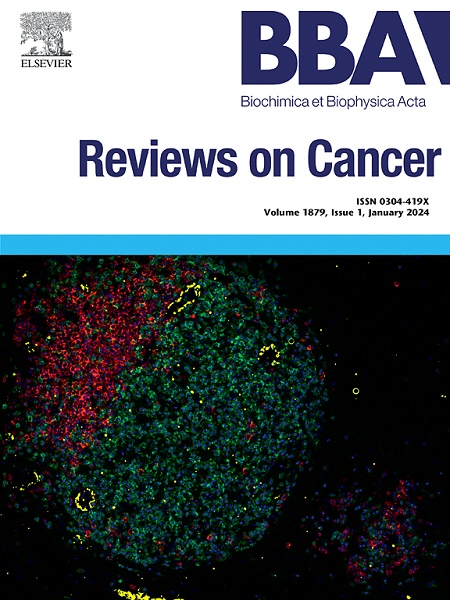In vitro models: Can they unravel the complexities of cancer cell metastasis?
IF 9.7
1区 医学
Q1 BIOCHEMISTRY & MOLECULAR BIOLOGY
Biochimica et biophysica acta. Reviews on cancer
Pub Date : 2025-03-05
DOI:10.1016/j.bbcan.2025.189293
引用次数: 0
Abstract
Metastasis still accounts for the majority of cancer-related deaths despite intense research efforts made worldwide to better understand the determinants involved and discover novel ways to halt it. However, studying the pathogenesis of metastasis in actual patients is indeed challenging which renders the need for the development of relevant experimental models urgent. Traditionally, several in vitro and in vivo models have been developed to study metastasis each of which having its own advantages and limitations. In the present review, we analyzed the current approaches used in cancer biology research to study cancer cell metastasis giving emphasis on the newly developed in vitro systems that take into account factors like the three-dimensional (3D) nature of the tumor, the interaction between cancer cells and the extracellular matrix or other cells present in the tumor microenvironment, and thus, better recapitulate the metastatic process. These approaches, namely 3D bioprinting, 3D tissue models, microfluidics systems, and spheroid generation are currently used separately or in combination depending on the research question and the cancer type in order to better represent the actual in vivo setting.
体外模型:它们能揭示癌细胞转移的复杂性吗?
转移仍然是癌症相关死亡的主要原因,尽管世界范围内进行了大量的研究工作,以更好地了解所涉及的决定因素并发现新的方法来阻止它。然而,研究实际患者的转移发病机制确实具有挑战性,迫切需要开发相关的实验模型。传统上,已经开发了几种体外和体内模型来研究转移,每种模型都有其自身的优点和局限性。在本综述中,我们分析了目前癌症生物学研究中用于研究癌细胞转移的方法,重点介绍了新开发的体外系统,该系统考虑了肿瘤的三维(3D)性质,癌细胞与细胞外基质或肿瘤微环境中存在的其他细胞之间的相互作用等因素,从而更好地概括了转移过程。这些方法,即3D生物打印、3D组织模型、微流体系统和球体生成,目前根据研究问题和癌症类型单独或组合使用,以便更好地代表实际的体内环境。
本文章由计算机程序翻译,如有差异,请以英文原文为准。
求助全文
约1分钟内获得全文
求助全文
来源期刊

Biochimica et biophysica acta. Reviews on cancer
医学-生化与分子生物学
CiteScore
17.20
自引率
0.00%
发文量
138
审稿时长
33 days
期刊介绍:
Biochimica et Biophysica Acta (BBA) - Reviews on Cancer encompasses the entirety of cancer biology and biochemistry, emphasizing oncogenes and tumor suppressor genes, growth-related cell cycle control signaling, carcinogenesis mechanisms, cell transformation, immunologic control mechanisms, genetics of human (mammalian) cancer, control of cell proliferation, genetic and molecular control of organismic development, rational anti-tumor drug design. It publishes mini-reviews and full reviews.
 求助内容:
求助内容: 应助结果提醒方式:
应助结果提醒方式:


